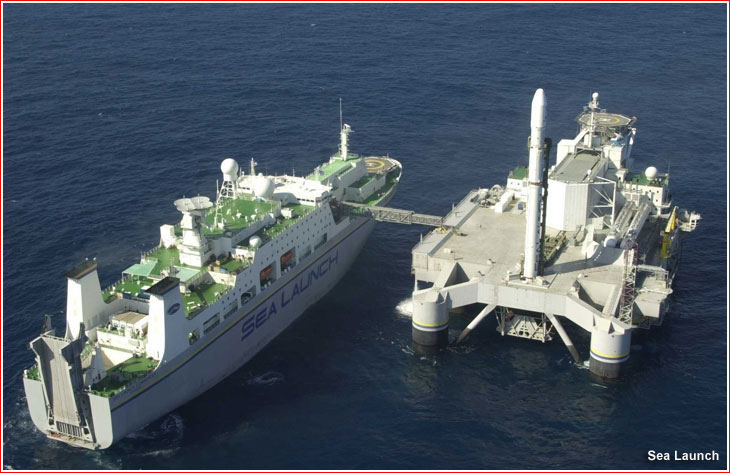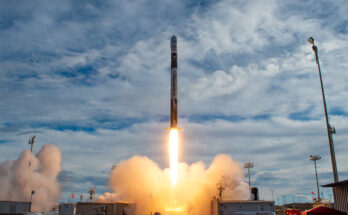
Sea Launch was a multinational company established in 1995 following Boeing’s research into launching satellites from a sea-based platform in international waters. Launching from the open sea mitigates any risk to populations and Sea Launch could choose from which coordinates to launch their rockets (typically the equator) which aids in payload delivery.
The company utilized a modified version of the Ukrainian Zenit rocket, known as the Zenit-3SL, which was designed by Yuzhnoye Design Bureau in Dnipro, Ukraine. These rockets were launched from a platform called Odyssey, which was repurposed from an oil drilling rig. Sea Launch conducted the first launch in 1999, which launched the DirecTV 1-R satellite.
The Zenit rocket is a two-stage (Zenit-2) or three-stage (Zenit-3) vehicle, with a first stage nearly identical to the strap-on rocket boosters used in the retired Russia’s Energia. Both the Zenit and the Energia used the Glushko-designed RD-170 engine, a closed-cycle powerplant burning liquid oxygen and kerosene.
Boeing and NPO Energia developed a three-stage Zenit vehicle that was launched from a seagoing platform. Part of the Sea Launch program, this booster uses the Proton Block DM fourth stage and can be launched at sea near the equator to increase the payload capacity to geosynchronous orbit
Early setbacks, including a 2007 launch failure, coupled with financial difficulties and supply chain issues, led to bankruptcy in 2009.
Following a restructuring process, Sea Launch was acquired by Russian S7 Group in 2016. Under S7’s ownership, the company aimed to revive its operations and leverage the capabilities of the Zenit rocket. S7 had ambitious plans to restart Zenit operations, first from Baikonur and later from the Sea Launch platform. In order to realize those plans, S7 signed a contract with Yuzhnoye in June 2017 to restart Zenit production. S7 also worked with Energia and Roscosmos to refurbish Sea Launch’s assets.
This activity appeared to be paying off when S7 was able to conduct the launch of a Zenit 3SLBF from Baikonur on December 26, 2017. The launch vehicle carried AngoSat-1 into orbit.
Recent reports indicate that S7 has stripped its Sea Launch assets of all American and Ukrainian equipment. The platform and ship were sent to Russia for re-equipping. The reported cost of refurbishing the platform and ship would be about $470 million.
Zenit will likely never be used again with Sea Launch. Zenit is a Ukrainian launch vehicle, and the Russian invasion of that country means there will be no further cooperation between the two nations in the space domain. A variant of Soyuz, namely Soyuz 5, is reportedly under development and will likely be used with Sea Launch if the platform is used again.
Sea-going platforms are now common in use within the launch industry, either for launch or recovery. China recently launched a Jielong-3 rocket from a sea platform near Haiyang City. SpaceX uses a drone ship to recover some of their Falcon 9 first stages. The Sea Launch system helped pave the way for sea-born platform use in rocketry.
Sea Launch was an interesting partnership between Ukraine, Russia and other member nations. The platform is now reportedly located in Vladivostok, Russia.
Carter Palmer has long held a keen interest in military matters and aviation. As a FI's space systems analyst he is responsible for updating the reports and analyses within the Space Systems Forecast – Launch Vehicles & Manned Platforms and Space Systems Forecast – Satellites & Spacecraft products.




